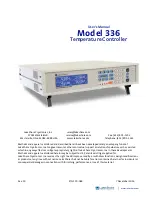
2.18.2 Time-Out Functions
2.18.2.1 Message-Object Time-Out Registers (MOTO)
Timer Management Unit
www.ti.com
To ensure that all messages are sent or received within a predefined period, each mailbox has its own
time-out register. If a message has not been sent or received by the time indicated in the time-out register
and the corresponding bit TOC[
n
] is set in the TOC register, a flag is set in the time-out status register
(TOS).
For transmit mailboxes the TOS[
n
] flag is cleared when the TOC[
n
] bit is cleared or when the
corresponding TRS[
n
] bit is cleared, no matter whether due to successful transmission or abortion of the
transmit request. For receive mailboxes, the TOS[
n
] flag is cleared when the corresponding TOC[
n
] bit is
cleared.
The CPU can also clear the time-out status register flags by writing a 1 into the time-out status register.
The message object time-out registers (MOTO) are implemented as a RAM. The state machine scans all
the MOTO registers and compares them to the TSC counter value. If the value in the TSC register is
equal to or greater than the value in the time-out register, and the corresponding TRS bit (applies to
transmit mailboxes only) is set, and the TOC[
n
] bit is set, the appropriate bit TOS[
n
] is set. Since all the
time-out registers are scanned sequentially, there can be a delay before the TOS[
n
] bit is set.
This register holds the time-out value of the TSC by which the corresponding mailbox data should be
successfully transmitted or received. Each mailbox has its own MOTO register.
Figure 2-26. Message-Object Time-Out Registers (MOTO)
31
0
MOTO31:0
R/W-x
LEGEND: R/W = Read/Write; -
n
= value after reset; x = indeterminate
Table 2-23. Message-Object Time-Out Registers (MOTO) Field Descriptions
Bit
Field
Value
Description
31:0
MOTO31:0
Message object time-out register. Limit-value of the time-stamp counter (TSC) to actually transmit
or receive the message.
eCAN Registers
58
SPRU074F – May 2002 – Revised January 2009
















































